

Managua
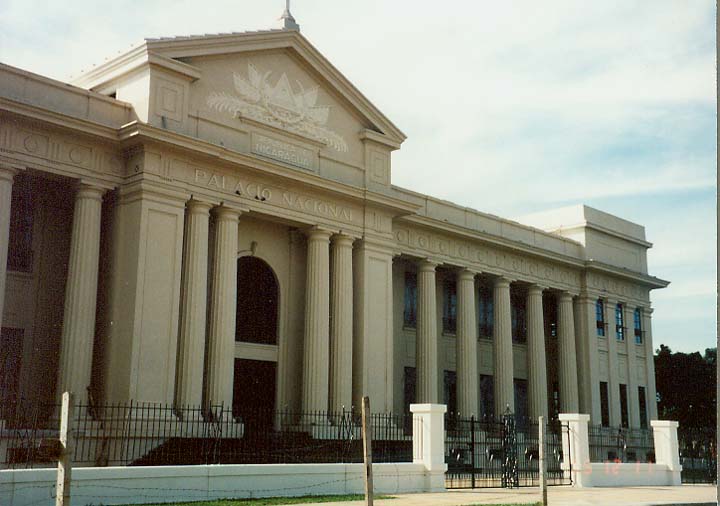
National Palace
Managua, city, capital of Nicaragua. By far the country’s largest city, Managua is the center of Nicaraguan transportation, commerce, finance, and manufacturing and is a major cultural and educational site. Built over geologic fault lines, Managua was badly damaged by earthquakes in 1931 and 1972, and most of its central area has never been rebuilt.
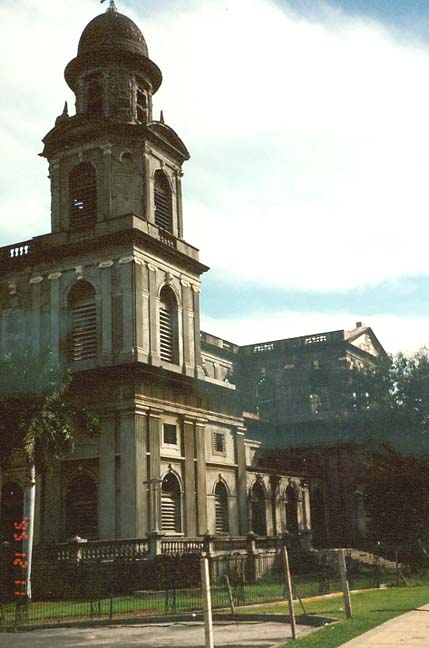
cathedral survived the earthquake
Managua is situated about 45 km (about 28 mi) from the Pacific Ocean, on the southern shore of Lake Managua. It lies in the western lowlands, Nicaragua’s most densely populated region, between the major cities of León and Granada. It is served by the Pan-American Highway. The climate is hot, with average daytime temperatures around 30° C (86° F) or higher. Heavy rains fall from May until early November, but the weather is relatively dry the rest of the year.
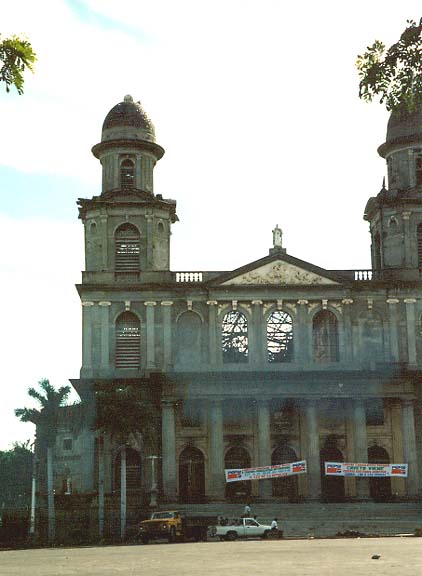
but is in ruins
Managua’s population has grown rapidly in the past half century, as rural residents have migrated there seeking a better life and safety from violence in the countryside. From a population of 109,352 in 1950, Managua reached 662,000 by 1980. By 1993 it had reached 1,600,666 people, more than one-third of Nicaragua’s population. According to some projections, the population could exceed 2 million by the start of the 21st century. The city’s inhabitants are largely mestizo, of mixed Native American and European ancestry. However, there is a significant white minority, mostly descendants of early Spanish settlers or later European and North American immigrants.
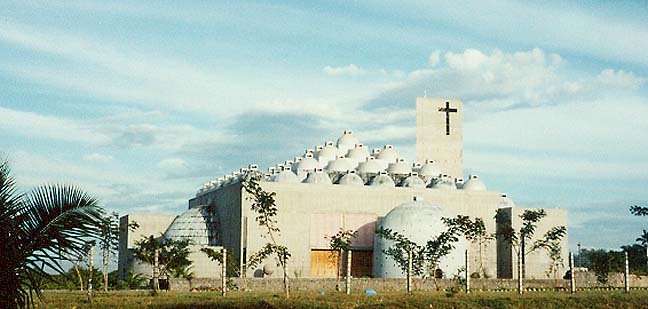
Cathedral of the Immaculate Conception
(the new cathedral)
Managua is a city without a real center. Most of its downtown was destroyed in the 1972 earthquake, and much of the area has been left vacant, is still covered with ruins, or has been converted into parks. Rebuilding has occurred on the outskirts of the city, especially to the south.
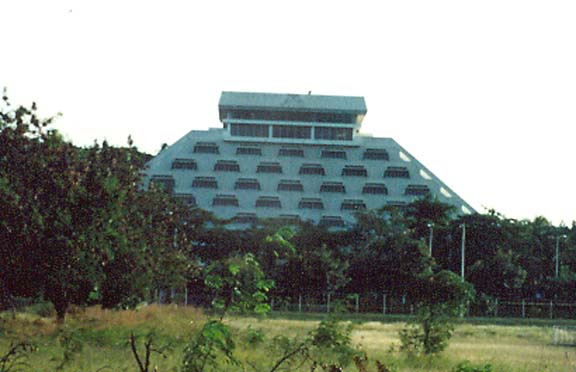
Intercontinental Hotel
(survived the earthquake
top floor for many years was the residence of former Dictator Samosa
and later Howard Hughes)
A few buildings survived in the former city center, near the shore of Lake
Managua. These include the National Palace, where the congress meets; the Fine
Arts Palace, a theater where major cultural events are held; and the Government
House, where the presidential offices are located. The ruins of the old
cathedral still stand, but a new cathedral has been built a few miles from
downtown. The dominant land feature for miles around is La Loma, a small hill
near the lakeshore with a volcanic lagoon behind it. The Intercontinental Hotel
and a monument to United States president Franklin Roosevelt are at the base of
La Loma, and the ruins of the former Presidential Palace are on its crest. The
only major new construction in the area is the Olaf Palme International
Conference Center, built in the 1980s. On the lake’s shore, a theater and statue
commemorate one of Nicaragua’s most famous writers, poet Rubén Darío.
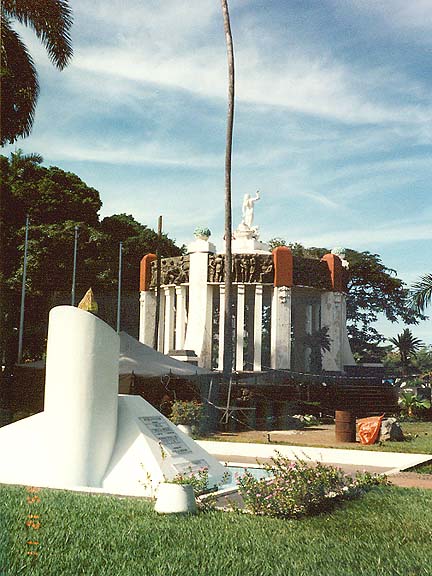
monument to the revolution
Spreading out from downtown are a series of neighborhoods, shopping centers, and office complexes. Most government offices are in a new Civic Center built 10 km (6 mi) south from the old city core. On the north edge of the city are the Footprints of Acahualinca, the oldest evidence of human settlement in Central America. Dating from about 4000 BC, these are footprints of people and animals fleeing a volcanic eruption; they are now preserved in a government archaeological site.

revolution patriot
Managua has some affluent neighborhoods, and the largest middle-class area, Ciudad Jardín, survived the earthquake. But most of the city is occupied by very poor neighborhoods, without adequate water, sewers, and other services. These areas are constantly growing as thousands of poor people pour in from the countryside every year. Some have built makeshift houses of cardboard and tin in vacant lots of the former downtown area.
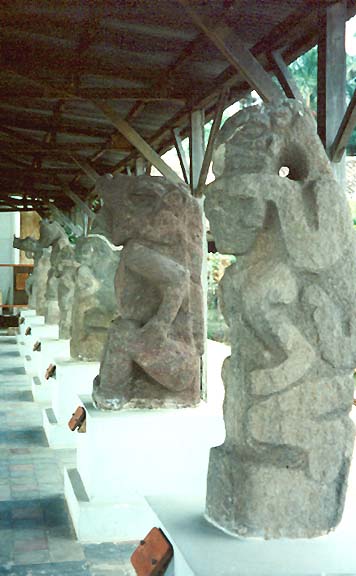
pre Columbian statues
Most of Managua’s industry stretches along the section of the Pan-American Highway that runs south from the old city center to the airport. Of Managua’s three traditional markets only the Mercado Oriental (eastern market) survived the 1972 earthquake. Several smaller markets have been built since 1972, notably the Mercado Huembes, known for its handicrafts.
Text from Microsoft Encarta
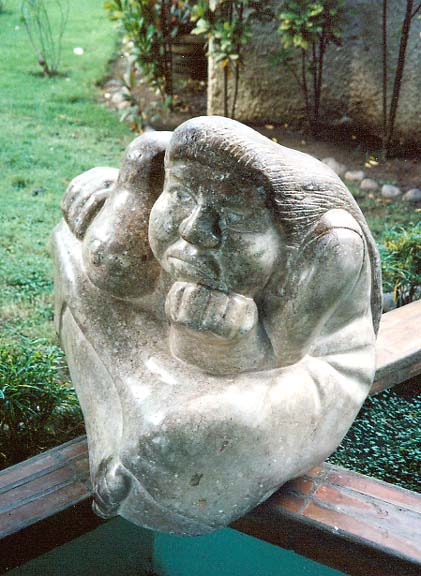
sculpture in the garden of the Mercedes Hotel

church from Colonial times

older church
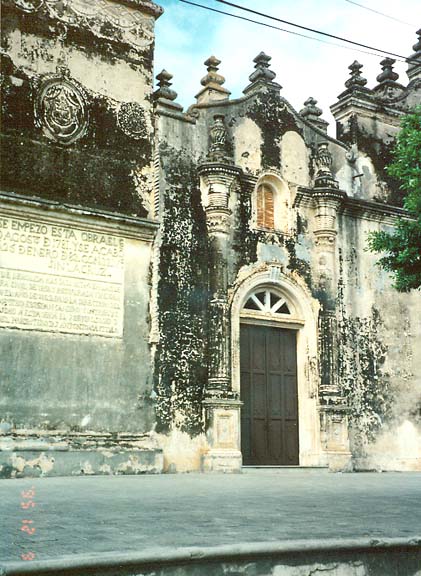
detail of doorway
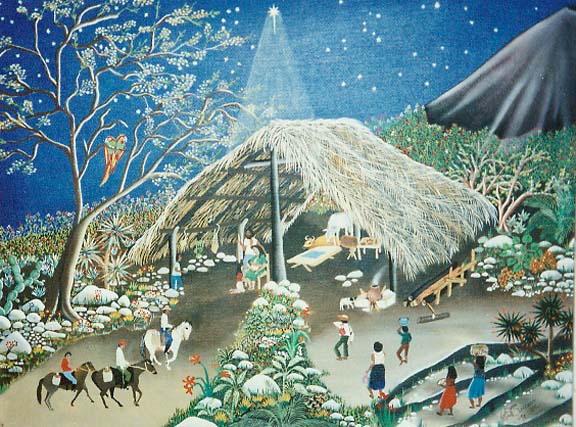
Nicaraguan Art - Christmas Scene
![]()
Return to Central America page
![]()